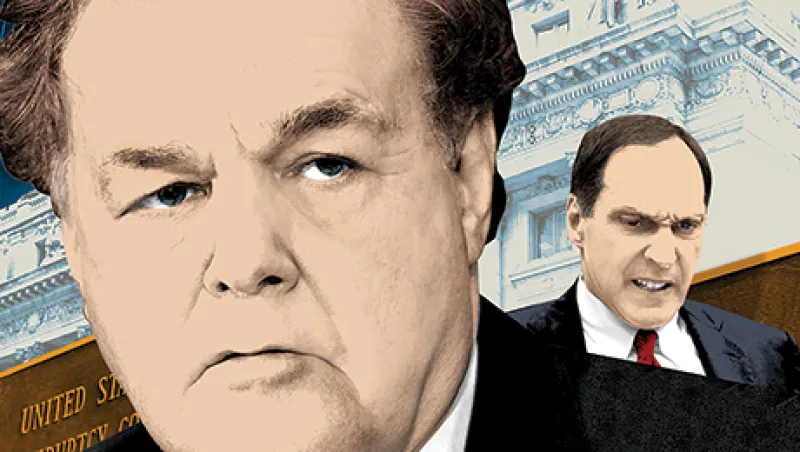On September 15, 2008, when Lehman Brothers Holdings filed for Chapter 11 protection, its $639 billion bankruptcy sent waves of panic through the capital markets. Under chairman and CEO Richard Fuld, the New York–based investment bank had battled valiantly to stay afloat; until 158-year-old Lehman surrendered, there was widespread doubt that the U.S. government would let it go under. And in the dark days that followed the biggest corporate bankruptcy in history, creditors feared they’d never be repaid. Allowing Lehman to fail was ill-advised, Harvey Miller, a partner with New York–based law firm Weil, Gotshal & Manges, who represented the bank, told the federal Financial Crisis Inquiry Commission in September 2009. “Lehman’s bankruptcy precipitated a crisis that almost destroyed the whole financial system,” Miller said.
Five years after that shocking event, the bank’s restructuring has turned out to be a triumph, even though more work remains. In June the Lehman estate announced that customers covered by the federal Securities Investor Protection Corp. would get all of their money back. SIPC customer assets with Lehman totaled more than $100 billion. The estate, which is now in relatively good health, will cover legal fees too. The Lehman bankruptcy won’t cost U.S. taxpayers a dime.
SIPC president Stephen Harbeck praises Lehman trustee James Giddens and James Peck, the judge for the U.S. Bankruptcy Court for the Southern District of New York who is overseeing the case. “The restructuring has proved very successful, not just for clients but for creditors,” Harbeck says. “This shows that even in its most dire moments, the U.S. bankruptcy system works.”
If another major financial firm runs into such trouble, regulators should turn to the bankruptcy courts again, Harbeck argues. He prefers that option to an untested provision in the Dodd-Frank Act of 2010 that lets the Federal Deposit Insurance Corp. seize the assets of troubled institutions deemed too big to fail.
By contrast, the courts have gained plenty of experience. The past half decade has also seen the bankruptcies of Jon Corzine’s MF Global — the eighth-largest corporate insolvency of all time — Bernard L. Madoff Investment Securities, CIT Group and Washington Mutual.
In Lehman’s case Judge Peck’s court acted swiftly to provide rescue funding. London-based Barclays Capital offered debtor-in-possession financing and bought parts of the firm, including its U.S.-based investment banking and capital markets operations, out of bankruptcy. Soon Lehman was able to return the vast majority, $92 billion, of SIPC-covered claims. But many other issues remained unresolved. Of particular concern to hedge fund managers was what would become of the more than $16 billion in unsecured prime brokerage assets with U.K.-based Lehman Brothers International (Europe). There were also outstanding claims from Lehman’s repurchase customers, as well as its creditors, lenders and derivatives clients.
Given that uncertain outlook, the June announcement was a milestone. “We have overcome enormous complexities and unprecedented legal challenges to meet the goal” of 100 percent customer distributions, Giddens said in a statement. (He had no further comment, citing client confidentiality.) Chairman of the corporate reorganization and bankruptcy group at the New York office of law firm Hughes Hubbard & Reed, Giddens is also trustee for MF Global, which filed for bankruptcy in October 2011 and has promised to make its customers whole too.
In Lehman’s case the recent resolution of lawsuits involving LBIE and another subsidiary was crucial. But one big legal hurdle remains: the dispute between Lehman and Barclays Capital over who owns $8 billion in cash that was part of the bankruptcy. That case is before the Court of Appeals for the Second Circuit. Other parties have helped sell the firm’s assets to pay off debts. When Fuld stepped down as CEO in November 2008, he was replaced by chief restructuring officer Bryan Marsal, co-founder of New York–based professional services firm Alvarez & Marsal. In March 2012, Marsal resigned in favor of colleague John Suckow.
Under Alvarez & Marsal, aided by the rising value of real estate and private equity, and also by some important asset sales, Lehman’s balance sheet is looking good. As of June cash and investments totaled some $23.9 billion, with $13 billion earmarked for claims and disbursements. The bank’s estate put the total net recovery at $80.6 billion, 37 percent higher than its $58.9 billion estimate in August 2011. Five years on, Lehman is back in the black.
The Legacy of Lehman: A Look at the World 5 Years After the Financial Crisis
- 5 Years After Lehman, No One Can Declare the Financial System Safe
- Europe's Banks, Slow to Restructure, Pose a Systemic Risk Today
- Emerging Markets Face Mounting Challenges as Global Liquidity Dries Up
- As the Fed Readies to Taper, Is the World Ready for Higher U.S. Rates?
- China Exploits Crisis, Positions Renminbi as Potential Rival to Dollar






